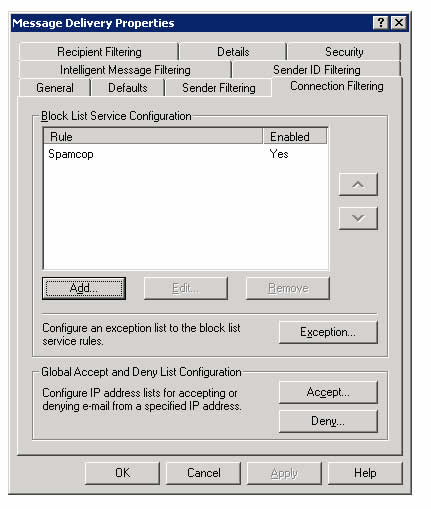March 25th, 2008
Here’s an interesting article that lists several things to do after starting a new WordPress blog. Things-to-do-after-starting-a-new-wordpress-blog/
The best tip on this page, and the one that I’ve just completed, is an installation of the plug-in to generate XML sitemaps for WordPress. It’s amazing how easy this was to install! In about 3 minutes I was up and running with a new sitemap. The coolest feature is the auto-submit feature to Google and other search engines, notifying them of new posts to your blog. Perfect for SEO!
Google has their blog search tool (currently in beta) as well as a pinging tool that checks thousands of blogs daily. They encourage you to use a tool such as this plug-in to update their blogsearch service with new content.
And while we’re on the subject of plug-ins for WordPress, it’s impressive just how many there are. Take a look at the official site.
Posted in Tech Club General | No Comments »
March 25th, 2008
I recently blogged about a large number of spam that has been hitting mailboxes with fascinating subject lines such as “herb.s help.s”, “make it bigger”, “she loves being on film” and a host of other less savory, witty and eye-catching titles. The SPAM kept getting through, even with commercial anti-spam products and RBLs enabled, including relays.ordb.org, bl.spamcop.net, zen.spamhaus.org and cbl.abuseat.org. Today, however, the tide seems to be turning against the spammers and I’ve noticed a decrease of over 80%!
A quick check using the ‘about my IP blacklist check‘ on some of the IP addresses used in the SPAM emails shows that Spamcop, at least, has started to successfully identify most of the spamming computers involved. Remember, these are machines that are infected with trojans or viruses. The spammers have taken them over and are using them illegally to send out SPAM, having turned them into spambots. The best way for us to defeat the problem is to ensure that everyone has quality technical support looking over their computers regularly and protecting their networks from attack. In reality, most people don’t even know that they have an infected computer and as a result, don’t contact anyone to help them. One sign that your computer is infected is if it’s running slower than you think it should, or strange things are happening on it – like windows opening that you didn’t expect to open.
If you’re running an email server and would like to start using a RBL to block spam, I recommend starting off with Spamcop. So far they are the quickest at identifying spammers and adding them to the blacklist. I’ve included a step by step process here to add Spamcop to your Exchange server. You should ensure that you’re running the latest version of Exchange Server 2003 with Service Pack 2 or above installed.
- Open Exchange System Manager
- Expand ‘Global Settings’ and right click on ‘Message Delivery’, then select properties
- Go to the ‘Connection Filtering’ tab
- Click on Add, type in the display name Spamcop and DNS Suffix ‘bl.spamcop.net‘
- Click OK and then apply
Here’s a screenshot of what your exchange server screen should look like when done:

Posted in Tech Club General | 1 Comment »
March 25th, 2008
Posted in Tech Club General | No Comments »
March 24th, 2008
This week, I’ve heard complaints from a handful of people who are upset about the amount of spam they’ve been getting. And rightly so! There appears to be a new spam botnet on the scene that is sending out millions of pieces of spam with such zesty subject lines as “increase the size of your member” or “9 to 12 inches”. What a bunch of goofs :). When I told a guy that these people must be making a LOT of money, he didn’t believe me at first. But then I convinced him there’s a sucker born every minute, and he saw my point.
The bottom line: Most of these machines aren’t even tracked yet by RBLs such as Spamhaus. Too bad! Even searching the Completewhois Multi-RBL lookup doesn’t seem to be much help. Many of these machines are newly infected with trojans and it seems that the botnet creater waited until he had quite a large number of infected machines before launching his spam campaign. So far, I’ve counted 100 unique IP addresses to send SPAM and that’s just on ONE tiny internet email domain!
SPAM, the never ending battle. 🙁 If you’re getting hit with these, post a comment and let me know.
Posted in Tech Club General | No Comments »
March 24th, 2008
I’ve been doing a little research recently on tools that can convert a PDF into an ASCII file. I’ve got all of the old tricks like Ghostscript, Export from Acrobat, print to PS file, etc. The problem with most techniques is that a true ASCII file is never generated where the format of the file on import to an ASCII text program matches the original PDF file layout.
Here are some links to some tools or code libraries that look promising:
BCL Technologies
XpdfText
PDF2TXT
VeryPDF
Posted in Tech Club General | No Comments »








